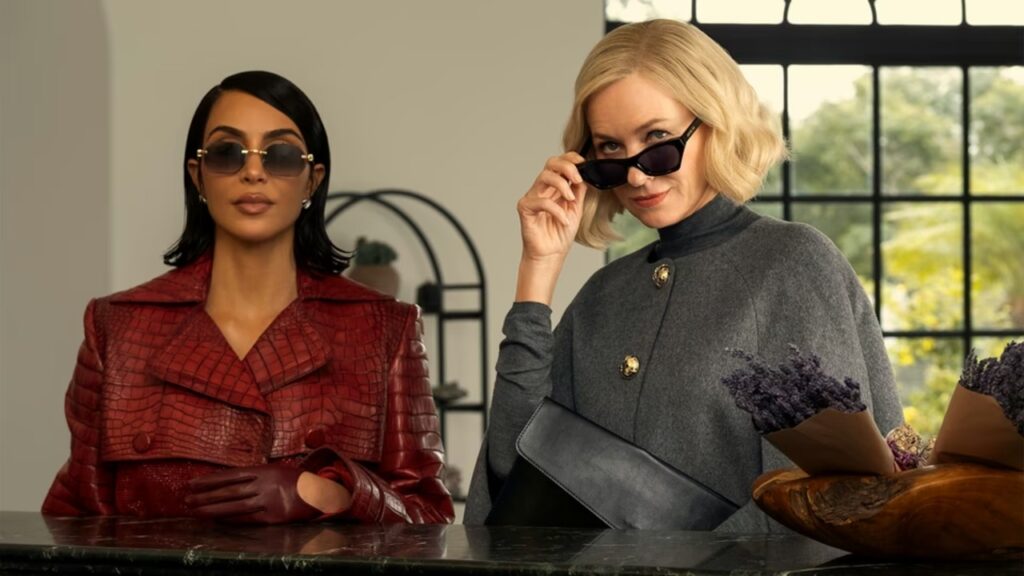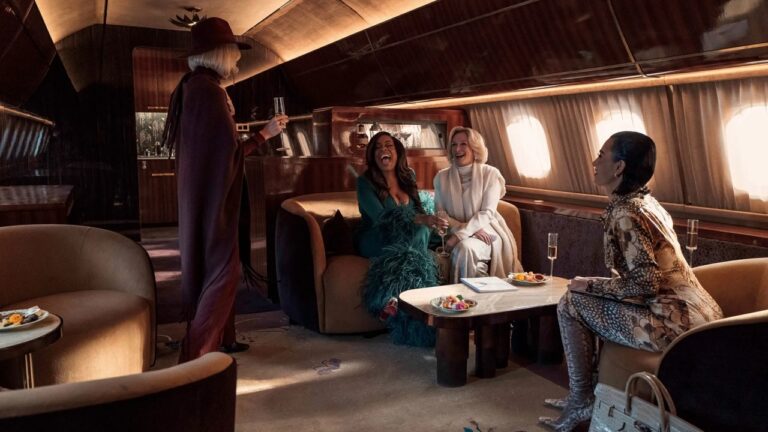Ryan Murphy‘s legal drama ‘All’s Fair’ stars Kim Kardashian, who is famously known for the reality show ‘Keeping Up With The Kardashians,’ along with Naomi Watts, Niecy Nash-Betts, and Teyana Taylor. The show is currently streaming on Hulu, which shows us a group of influential divorce lawyers navigating love, ambition, and betrayal in a world where wealth and beauty create a distraction. Created alongside Jon Robin Baitz and many executive producers, such as the momager of the Kardashians and Jenner clan, Kris Jenner, the show promised to bring together an ensemble of familiar faces
The show premiered on October 21 in Paris, which was attended by Kardashian and her co-stars. It was a very glamorous event, yet the reaction somewhat did not live up to the expectations that were promised to us. Critics have called out the show, saying it is “atrocious,” “empty,” and “the worst TV show of all time.” But beyond these insults also lies something much more significant that we cannot deny. All’s Fair might not simply be a bad show, as it could represent a new phase of television itself, which is “empty TV,” where the goal is not to tell stories but to reflect the hollow churn of a content-saturated world we live in right now.
Predictable Yet Polished

The latest creation by Murphy resembles a collage of recycled phrases, the glamour of luxury aesthetics, and algorithmic dialogue that is sadly stitched together without a guiding intent. It somehow feels less like a written drama and more like the output of a machine predicting what television should look like. If we think of it that way and look into it, the result is a kind of cultural feedback loop, which is an endless remix of familiar tropes with no emotional center.
In this show, we see that Kim Kardashian plays the glamorous divorce attorney named Allura, whose heartbreak is treated with the same detachment as a skincare tutorial. When things go wrong, she responds not with emotion but with a monologue about miracle lasers and collagen stimulation. The scene shows us a world where sadness, beauty, and greed all exist together on the same shallow level.
And honestly, the dialogues were often bizarre, and it seemed like the show was giving its best to oscillate between satire and sincerity. A husband confesses, “I’m drowning here with you,” and we see his wife replying, “What are you talking about? You’re famous. You have three Super Bowl rings.” And when we think about it deeply, it is unclear if the moment is meant to be funny or tragic. The show somehow exists in a liminal space where meaning dissolves, and distinctions no longer matter.
What can be pointed out figuratively is that Murphy’s team appears to be testing what happens when storytelling becomes data aggregation in today’s world. Thirty years after Seinfeld called itself “a show about nothing” but still revealed the neuroses of friendship and daily life, and in between, All’s Fair arrives as a show about nothing in the most literal sense. It is a television show that is entirely detached from narrative, morality, or perspective. For us, it is a simulation of storytelling in the same way that social media simulates connection.
Glossy Aesthetics Dilutes Conflict and Character Substance in Television

The creative excess extends to the production itself. There are fifteen executive producers, including Kris Jenner, which might be the reason why the series feels like as if it were designed by a committee. Every voice cancels out the others, producing a sleek surface with no substance underneath, just like fans have pointed out with the old Kardashian show. And when you look at it like that way, the show mirrors the large language models that inspired its critique, systems that process massive amounts of information but generate meaning only through pattern and probability.
Even the cast seems aware of the absurdity. Glenn Close recently posted a hand-drawn doodle on social media showing critics being boiled in a pot while the cast looks on. And this is where things get interesting. Kim Kardashian followed with an Instagram post ironically celebrating the show’s “critical acclaim,” quoting negative reviews as though they were praises, which honestly again makes no sense, but to the team? Sure.
Well, for us? Just know that to view All’s Fair purely as a disaster would be a mistake because of its strange cultural timing. Murphy, long known for bending genres with shows like Nip/Tuck, Glee, and American Horror Story, may have unintentionally created the perfect mirror of the entertainment industry’s current state. As algorithms, such as AI, and influencer culture blend into the creative process, the show somehow emerges as both symptom and statement of a drama that exemplifies the logic of the digital void.
In that sense, All’s Fair may be remembered less as television and more as the moment television stopped pretending to mean something. What comes next may not involve writers or actors at all, but systems trained to remix our desires into shiny, hollow images. For now, Murphy and Kardashian have given us a preview of that future, one where the screen glitters beautifully while saying absolutely nothing.




